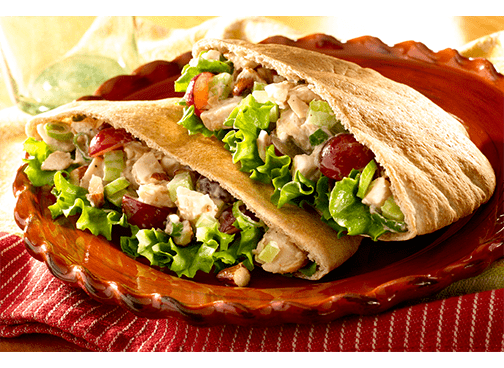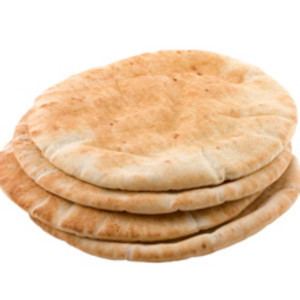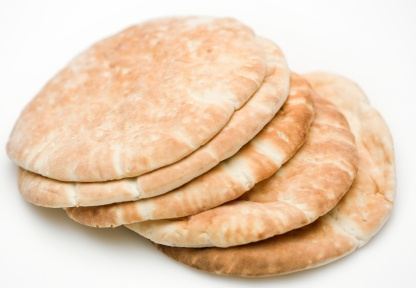Place of origin Middle East | ||
Main ingredients Flour, water, yeast, salt Similar Bread, Hummus, Falafel, Gyro, Tzatziki | ||
Pita bread how to make pita bread at home grilled flatbread
Pita (/ˈpɪtə/ or /ˈpiːtə/) in Greek, also known as Arabic bread, Lebanese bread, or Syrian bread, is a soft, slightly leavened flatbread baked from wheat flour, which originated in the Near East, most probably Mesopotamia around 2500 BC. (archaic reference needed) It is used in many Mediterranean, Balkan, and Middle Eastern cuisines, and resembles other slightly leavened flatbreads such as Iranian nan-e barbari, Central and South Asian flatbreads (such as naan), and pizza crust.
Contents
- Pita bread how to make pita bread at home grilled flatbread
- How to make pita bread on stove pita bread in few steps
- Etymology
- Preparation
- Culinary use
- References

How to make pita bread on stove pita bread in few steps
Etymology

The first known mention of "Pita" is in Aristophanes's comedies. The first known mention of the word in English was in 1936. The English word is borrowed from Modern Greek πίτα, in turn from the Byzantine Greek πίτα "bread, cake, pie, pitta" (attested in 1108) and possibly from the Ancient Greek πίττα or πίσσα "pitch/resin" (for the gloss), or Ancient Greek πικτή (pikte), "fermented pastry," which may have passed to Latin as "picta" cf. pizza. It was received into Levantine Arabic (as fatteh, since Arabic lacks the sound /p/). Other hypotheses trace the word back to the Classical Hebrew word patt פת (literally "a morsel of bread"). It is spelled like the Aramaic pittəṭā/pittā (פיתה), from which it was received into Byzantine Greek (see above). Hypotheses also exist for Germanic or Illyrian intermediaries.

The word has been borrowed by Turkish as pide, and appears in the Balkan languages as Serbo-Croatian pita, Romanian pită, Albanian pite, Bulgarian pitka or pita. In Arabic, the phrase "خبز البيتا" (pita bread) is sometimes used; other names are simply "خبز" 'khubz, bread' or "الخبز العربي" 'Arab bread' or "خبز الكماج" 'al-kimaj bread'. In Egypt, it is called ʿaish (عيش) or ʿaish baladi (عيش بلدي).
Preparation

Most pita are baked at high temperatures (450 °F or 232 °C), causing the flattened rounds of dough to puff up dramatically. When removed from the oven, the layers of baked dough remain separated inside the deflated pita, which allows the bread to be opened to form a pocket. However, pita is sometimes baked without pockets and is called "pocket-less pita".
Nowadays, modern commercial pita bread is prepared on advanced automatic lines. These lines have high production capacities, up to thousands per hour.
Culinary use
Pita can be used to scoop sauces or dips, such as hummus or taramosalata, or to wrap kebabs, gyros, or falafel in the manner of sandwiches. It can also be cut and baked into crispy pita chips.
In Greece, pita is a component of pita-souvlaki. These types of sandwiches involve the wrapping of souvlaki or gyros with tzatziki, tomatoes, onions, french fries, and condiments into a pita bread. Pita is also the name of a type of pastry found throughout Greece, filled with a variety of ingredients. Some examples of these pies are Kolokythopita (filled with pumpkin), Mizithropita (mizithra cheese filling - a specialty of Crete), Melintzanopita (eggplant filling), Tsouknidopita (stinging nettle filling), Kremydopita (onion filling), Kreatopita (meat pie), Galatopita (custard filling), Marathopita (fennel filling), Tyropita (egg and cheese filling), Spanakopita (spinach and feta filling), and Ladopita (semolina pie).
In Cyprus, pita is typically rounder, fluffier and baked on a cast iron skillet. It is used for souvlakia, sheftalia, halloumi with lountza, and gyros.
In Egyptian, Jordanian, Iraqi, Israeli, Lebanese, Palestinian, and Syrian cuisine, almost every savory dish can be eaten in or on a pita. Common fillings include falafel, lamb or chicken shawarma, kebab, omelettes such as shakshouka (eggs and tomatoes), hummus, and other mezes.
In Turkish cuisine, the word pide may refer to three different styles of bread: a flatbread similar to that eaten in Greece and Arab countries, a pizza-like dish where the filling is placed on the (often boat-shaped) dough before baking, and Ramazan pide. The first type of pide is used to wrap various styles of kebab, while the second is topped with cheese, ground meat, or other fresh or cured meats, and/or vegetables. Regional variations in the shape, baking technique, and toppings create distinctive styles for each region.
